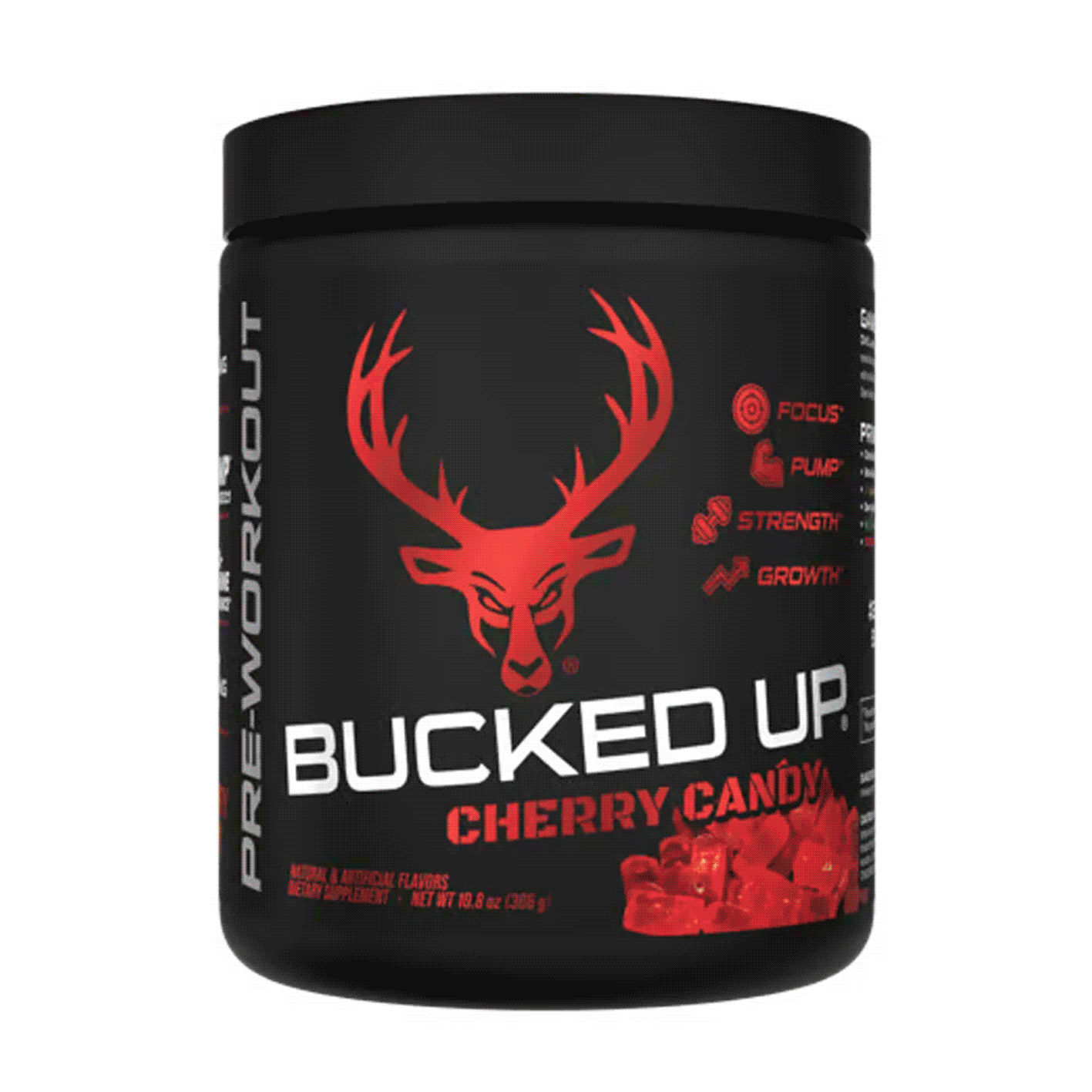Choosing the right whey protein can make a real difference in your fitness journey. Whey protein isolate (WPI) offers higher amino acid content, faster digestion, and better muscle recovery compared to whey protein concentrate (WPC). Knowing how these two differ in processing and benefits can help you pick the best option for muscle growth, weight management, or digestive ease. If you’re after quick recovery or have lactose sensitivity, WPI’s purer form often works best. Check out Bucked Up Protein Soda with 25g of top-quality whey protein isolate in a refreshing, carbonated drink, ideal for post-workout or an easy protein boost any time.

What Is Whey Protein? Unpacking Muscle-Building Basics
Amino acids are the core components of muscle tissue, including nine essential ones your body can’t make on its own. Among them, branched-chain amino acids (BCAAs) like leucine, isoleucine, and valine stand out for supporting muscle growth and recovery. Whey protein contains 43% essential amino acids, making it a top choice for muscle protein synthesis among animal-based proteins.
The effectiveness of a protein depends on its amino acid quality and concentration. Complete proteins, which include all nine essential amino acids in balanced amounts, are most effective for building and repairing muscle. Whey protein ranks high as a complete protein, but whether it’s isolate or concentrate affects how much benefit you get per serving.
Digestion speed also plays a key role. Proteins that break down quickly deliver amino acids to your muscles faster, which is especially helpful right after a workout. Let’s dive into how isolate and concentrate compare to help you meet your specific health and fitness targets.
How Do Isolate and Concentrate Differ in Processing?
Whey protein isolate and concentrate vary mainly in how they’re processed, which affects their purity. Isolate undergoes extensive filtration to remove nearly all fats, carbs, and lactose, resulting in a higher protein content than concentrate. This process typically brings isolate to 90% or more protein per serving, while concentrate ranges from 35% to 80%.
Isolate’s production often uses techniques like cross-flow microfiltration or ion exchange to strip away non-protein elements. This filtration boosts isolate’s protein purity to about 90%, compared to concentrate’s 80% or less. The result is a product with better absorption and fewer extras.
Concentrate, on the other hand, keeps more of milk’s natural components due to less processing. It contains up to 5% lactose and 70-85% protein, which may cause digestive issues for some, unlike the near lactose-free isolate. While still valuable, concentrate’s makeup suits fewer people compared to isolate.
Isolate costs more due to this detailed processing, but the advantages often outweigh the price for those with dietary restrictions or specific performance needs. Understanding these differences shows why isolate often provides better support for recovery and lean muscle gains.
Comparing Isolate and Concentrate for Your Needs
Protein Content and Amino Acid Strength
The amino acid levels in isolate versus concentrate directly affect their impact on muscle growth. Isolate delivers 23g of BCAAs and 11g of leucine per 100g, compared to concentrate’s 17g BCAAs and 8g leucine, making it more effective for muscle synthesis. Leucine, in particular, triggers muscle repair and growth.
Isolate also offers more total essential amino acids and BCAAs than many other protein types. While both isolate and concentrate are complete proteins, isolate provides a higher density of amino acids per serving.
Looking at protein per calorie highlights isolate’s edge. A 100-calorie serving of isolate gives 23g of protein, while concentrate provides 18g, offering more efficiency for low-calorie diets. This makes isolate a strong pick for lean muscle building or weight control.
How Fast Do They Digest and Absorb?
Digestion speed matters for how quickly protein supports your muscles after exercise. Isolate digests quickly due to its low fat and lactose content, speeding amino acids to your muscles. This makes it a go-to for post-workout recovery.
Though absorption rates are close between the two, isolate’s lighter profile can improve speed for some users. Less fat means fewer delays in getting amino acids where they’re needed.
Isolate’s fast digestion suits it for immediate muscle repair after workouts. Athletes often prefer it for this reason during intense training phases.
Lactose Levels and Digestive Ease
Digestive comfort sets isolate apart from concentrate. Isolate suits those with lactose intolerance better due to its minimal lactose content. This opens it up to more users who might struggle with dairy.
The lactose gap is clear. Concentrate has up to 5% lactose with 70-85% protein, potentially causing discomfort, while isolate’s near-zero lactose improves tolerance. This can be a game-changer for sensitive stomachs.
Isolate’s cleaner profile also cuts down on bloating or gas from other irritants. It’s a reliable choice for steady protein intake without the digestive hassle of other sources.
Calories and Nutrient Balance
For body composition goals, isolate’s nutrient makeup offers an advantage. It provides more protein per serving with fewer calories, fats, and carbs, supporting lean muscle growth or weight control plans.
This calorie efficiency helps those on restricted diets meet protein needs without extra bulk. You get higher protein per calorie, preserving muscle during weight loss or building without added fat.
Athletes needing high protein can consume more isolate without feeling stuffed or overloading on calories. This flexibility aids in hitting protein targets while keeping energy and composition in check.
Quick Comparison: Isolate vs. Concentrate at a Glance
|
Attribute |
Whey Protein Isolate |
Whey Protein Concentrate |
|
Protein Purity |
High (90%+) |
Moderate (35-80%) |
|
Lactose Content |
Very Low/Virtually Lactose-Free |
Higher (up to 5%) |
|
Fat/Carbs |
Very Low |
Higher |
|
Digestion Speed |
Faster |
Slower |
|
Digestive Comfort |
Better for Most |
Possible Discomfort |
|
BCAA/Leucine |
Higher Amounts |
Lower Amounts |
|
Best For |
Lean Gains, Quick Recovery, Dietary Needs |
General Use, Budget-Friendly |
Why Bucked Up Protein Soda Uses Isolate for Better Results
Maximizing Benefits with Whey Protein Isolate
Bucked Up Protein Soda contains 25g of whey protein isolate per can to ensure you get high amino acid levels, quick absorption, and easy digestion. This choice prioritizes effectiveness for active individuals or those with unique dietary requirements.
Using isolate offers clear upsides beyond just protein numbers. Its purity benefits those watching calories or avoiding lactose. This fits a wide range of users, from athletes to busy folks needing a protein boost.
Our isolate delivers strong support for muscle repair with high leucine and BCAA content. Whether it’s recovery after a workout or a daily protein lift, isolate ensures you get solid results with every sip.
Try Bucked Up Protein Soda and feel the impact of pure isolate. Unlike shakes with mixed proteins, our soda sticks to 100% isolate for maximum benefit.

Enjoy Protein with a Refreshing Twist
Bucked Up Protein Soda isn’t just about high-quality isolate; it’s also a fun way to drink protein. Our lightly carbonated, clear formula packs 25g of protein with no sugar, carbs, or caffeine, mimicking the crisp taste of your favorite soda.
This fizzy format tackles a common issue: protein boredom. Heavy or chalky shakes can be a drag to drink regularly. Our soda’s light, bubbly nature changes that, with flavors customers call “tropical” and “super tasty.”
Feedback highlights both taste and results. One user shared, “Hitting 130g of protein daily used to be a chore. With this soda, I can drink a few cans easily and actually enjoy it.” Enjoyment keeps you consistent.
Convenience adds to the appeal. No mixing or prep needed, just grab a can. Perfect for anyone on the go, from parents to athletes, needing protein without the fuss.
Pick Smart: Boost Your Goals with Bucked Up Protein Soda
Deciding between isolate and concentrate depends on your personal fitness aims and lifestyle. Isolate stands out with higher amino acid content, quicker digestion, better tolerance, and more protein per calorie. It suits athletes, weight managers, and anyone wanting effective protein intake.
Bucked Up Protein Soda blends isolate’s proven advantages with a fresh, enjoyable format. We use 100% isolate, avoiding concentrates or fillers, to guarantee a full amino acid profile in every can.
For post-workout recovery, weight goals, or an easy protein bump, our soda offers quality and taste. Its amino acid strength, fast absorption, and refreshing style make it a top pick for nutrition without compromise.
Common Questions on Isolate vs. Concentrate
Why Does Isolate Digest Faster?
Whey protein isolate digests quicker due to its high purity and low levels of fat and lactose. The thorough filtration cuts out elements that slow digestion, getting amino acids to muscles sooner. This speed helps post-workout when muscles need nutrients fast. Being nearly lactose-free also prevents delays or discomfort compared to concentrate. Plus, higher protein density means more usable amino acids per scoop without extra digestive load.
How Does Bucked Up’s Amino Acid Content Stack Up?
Bucked Up Protein Soda provides a stronger amino acid mix than many standard shakes by using pure whey protein isolate. It offers higher leucine and BCAA levels, vital for muscle repair. Unlike some shakes with concentrate or added fillers, our isolate ensures complete amino acids with better absorption. The fizzy format doesn’t affect quality; you get full benefits in a tastier drink.
Is It Safe for Lactose Intolerance?
Most people with lactose intolerance can handle Bucked Up Protein Soda since it uses near lactose-free isolate. Filtration drops lactose below 1%, far less than concentrate’s 3-5%. This suits many with mild sensitivity, though those with severe cases should test small amounts first. Some find the carbonation even helps digestion. Users often note better tolerance compared to typical dairy proteins.
Does Carbonation Change Protein Quality?
The carbonation in Bucked Up Protein Soda doesn’t harm its amino acid content or effectiveness. Our isolate keeps its full profile and absorption power in this unique format. Some users feel the fizz aids digestion, making protein lighter to drink. Manufacturing preserves the protein’s stability, ensuring BCAAs and leucine stay ready for muscle support. You get isolate’s full value in a refreshing package.
Does Isolate’s Higher Price Make Sense?
For many focused on fitness or dietary needs, isolate’s cost is worth it due to its higher impact. You use less to hit protein goals, balancing the price. Digestive ease benefits those sensitive to lactose or bloating from concentrate. Quicker absorption and denser amino acids aid recovery and muscle gains. Plus, calorie efficiency supports weight plans. With formats like Bucked Up Protein Soda, the added value of convenience and enjoyment often outweighs the upfront cost.

